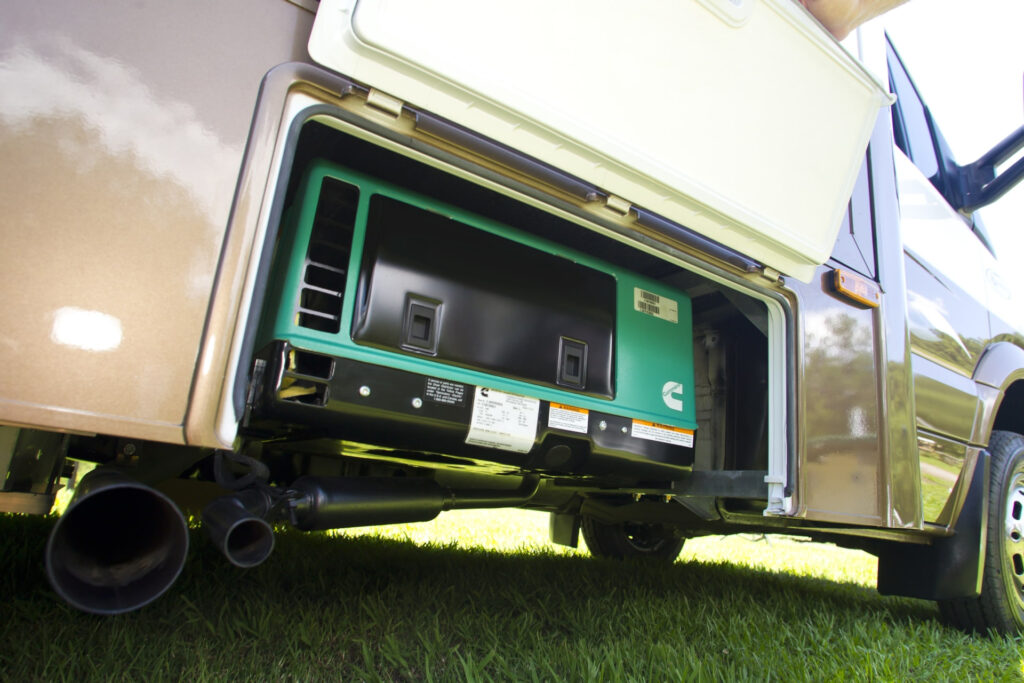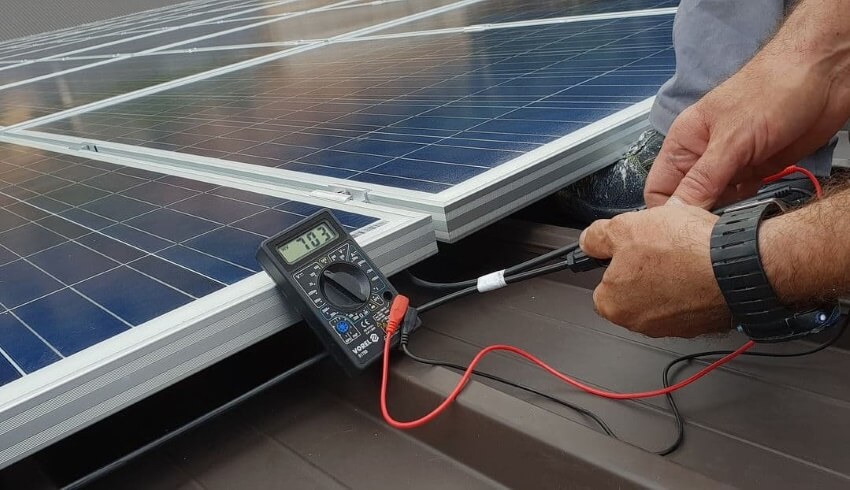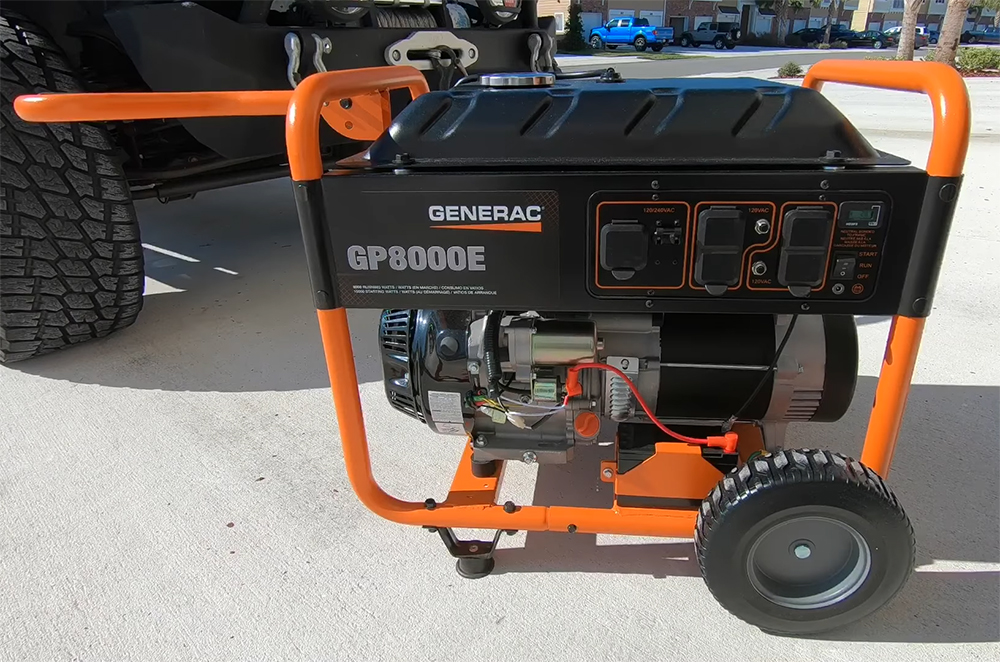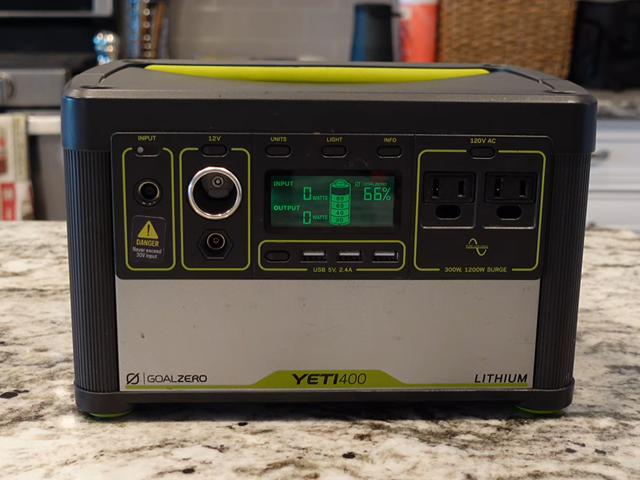
If you drive an RV, you are likely concerned about how to make all parts of it last for a long time. One of the most important parts of an RV is the batteries. The lifespan of the batteries will be longer and these batteries will be more effective if you charge them correctly. As a camper, you likely depend on a generator or 12-V converter for your power needs. In this post, we will tell you how to charge RV battery with generator.
There are several types of batteries found in RVs and a bunch of different converters that will affect how you will charge the RV battery. In this post, we will delve into several important things to consider when charging the batteries. We will see the steps and tools required for correct charging, alternative means of charging, and several other important factors to consider when choosing a generator for charging.

RVs have deep cycle batteries Trusted Source Deep-cycle battery - Wikipedia A deep-cycle battery is a battery designed to be regularly deeply discharged using most of its capacity. en.wikipedia.org . There are other types of batteries out there, but this type of battery is the best for an RV. One main advantage of these batteries is that they can store more power than regular batteries. Additionally, they are designed to hold a charge for a longer time than the regular options.
If a deep cycle battery is fully charged it can help you run all your appliances. The question then is whether it is possible to charge RV battery with a generator.
The answer is yes! You can use a good RV generator, such as those we have discussed in this review, to charge the battery. There are other types of generators, for example, the pre-installed generators, that can also help with charging the batteries.
The best time to recharge the RV battery is before you hit the road. This is doubly important if you are going to a place without power.
Later in this post, we will consider some alternative ways of charging the RV’s battery. However, even if you are using alternative methods to charge your batteries, you might occasionally need to charge using a portable generator. Therefore, it is vital to pay attention to this section.
When the battery is completely charged, it can hold a charge for a long period and will cater to the needs of your equipment and other appliances.
Here is a systematic consideration of how you can charge the battery with a generator.
Depending on the type of generator, you might need to recharge it or start it up. The generator needs to have power before it can effectively charge anything else, especially a deep cycle battery.
Therefore, check out important things like the fuel level. Oil level, and other stuff. If you are confused about what else to check, consult the user manual. Afterward, plug it into electricity and fully charge the generator.
You might wonder what the relationship between a clean battery and charging the battery is. However, evidence from users has revealed that it is very important to have a clean battery before you start charging. A dirty battery can cover up signs of damage, which can have a bad effect on the battery’s efficiency.
Thus, check the battery connections and ensure there is no corrosion. If you observe an odd color on them, you will need to clean these off with a clean toothbrush and wet baking soda.
Here, determine whether the battery is factory sealed or not. If it is not factory sealed, then you can prepare the battery by checking out the electrolyte level. If the electrolyte is low, you should top it off by adding clean water until it gauges.
After checking out that level, you should plug in the cables. First, plug in the red cable, then plug in the black cable. Use a plier or something else to ensure that the connections are firm. After confirming that the connections are firm, attach the alligator clips on to the terminals.
Is your generator directly connected with your RV’s electrical system? If so, you have to be extra careful when charging the battery. To that end, ensure that all of the connections are switched off and unplugged.
Apart from reducing the risk of damage to these appliances, unplugging them also ensures that your battery charges quickly and efficiently. In simple terms, there should not be anything that can drain the power as the generator charges the battery.
This is the final stage. However, it is important to do it correctly to avoid any danger or damage. Before you connect the generator to the battery, you must have the correct charger. From our research, the best type of charger is the 3-stage charger. It will do a great job regardless of the stage of the battery.
The charge time of the battery is dependent on some factors.
For one, if you are using an inbuilt generator, it will charge for a shorter time than if you were using a portable generator.
Another factor that will affect the speed is the weather condition. An RV battery will achieve total capacity when the surrounding temperature is over degrees. Thus, if you are charging at high altitudes or in cold weather, the battery would take a longer time to fully charge.
Additionally, it will take a longer time for the battery to charge if the charge is lower than 20 percent.
Using a generator to charge your battery is great, however, there are some risks associated with using the generator. Here we highlight the greatest risks and the precautions that you can take. By following these precautions, you will have safe and enjoyable use of your generator and RV battery.
As you travel around in your RV, you need to keep in mind that it will require charging. In the sections above, we have revealed how you can charge the battery using a generator. But what if you don’t want to use a generator? Are there any alternatives? In this section, we will discuss some of the alternatives to charging your RV battery with a generator.
First of all, we have to point out that this should only be done as a last resort. If you opt to use this method of charging the batteries, ensure that all the electrical components in the RV are switched off.
There are disadvantages to this method. For one, it is pretty slow. Additionally, it can damage your alternator.
There are several ways to charge the battery without using a generator, however, few methods are as popular as using the alternator. The RV’s alternator is how vehicles charge their batteries and is one way your RV battery can be charged.
The working principle of the alternator gives an inkling into why it can charge your RVs’ batteries. This device works by turning the mechanical energy into electrical energy. How is the generated?
Well, the mechanical energy is transformed into electrical energy when the engine starts and a belt rotates the alternator.
One of the reasons why you might decide to use an alternator is if you are on a long road trip.
However, if you are going to stay in the RV for a long time, it isn’t usually a good idea to use the alternator to charge the batteries. Why is this so? This is because charging with the alternator involves putting your vehicle in an idle state. When this is done on a spot, it is wasteful and can end up damaging your RV.
There have been great strides in the world of solar energy, and that extends to the RV. Solar energy has become one of the more accepted and popular means of power across industries and applications. There are also solar generators that can help with charging the battery. Reviews show that Rainier R150i is an excellent budget solar generator that will prove very useful if you hit the road often.
A solar power system uses the power stored from the sun’s rays to charge your batteries. It catches these rays and sends them to an amp, which in turn is connected to the battery. Some refer to this amp as the charge controller.
When choosing solar power to charge your battery, your solar power system must have a charge controller. This controller is very important because it is what stops the battery from overcharging.
In choosing solar power, you have two main choices. You can either choose from the pulse width modulation model or the maximum power point tracking controller; PWM and MPPT respectively.
From our research, the MPPT controller offers greater efficiency than the PWM controller. The main downside of this type of controller is that it is more expensive.
Just like solar power, wind power is a renewable, clean energy source for charging your battery. It is not yet as popular as the other means of charging batteries. It has limited use to windy places. Also, it will not be an ideal option for people that move the RV often.
While some have thought about attaching turbines to their vehicles and charging while driving, that isn’t legal and it might be dangerous. Furthermore, the drag that is created will affect the efficiency of the vehicle.
If you follow the instructions that we have provided in this article, as well as the precautions to take when charging an RV battery, you will be able to successfully charge the battery. When charging an RV battery, you must have an excellent generator. Reviews have shown that the Yamaha EF1000iS is one of the best generators for this purpose due to its quiet nature, minimum output, and versatility.
We hope that this article about how to charge RV battery with generator has assisted you by showing the systematic way to hook up the battery and have it charging safely and effectively.





